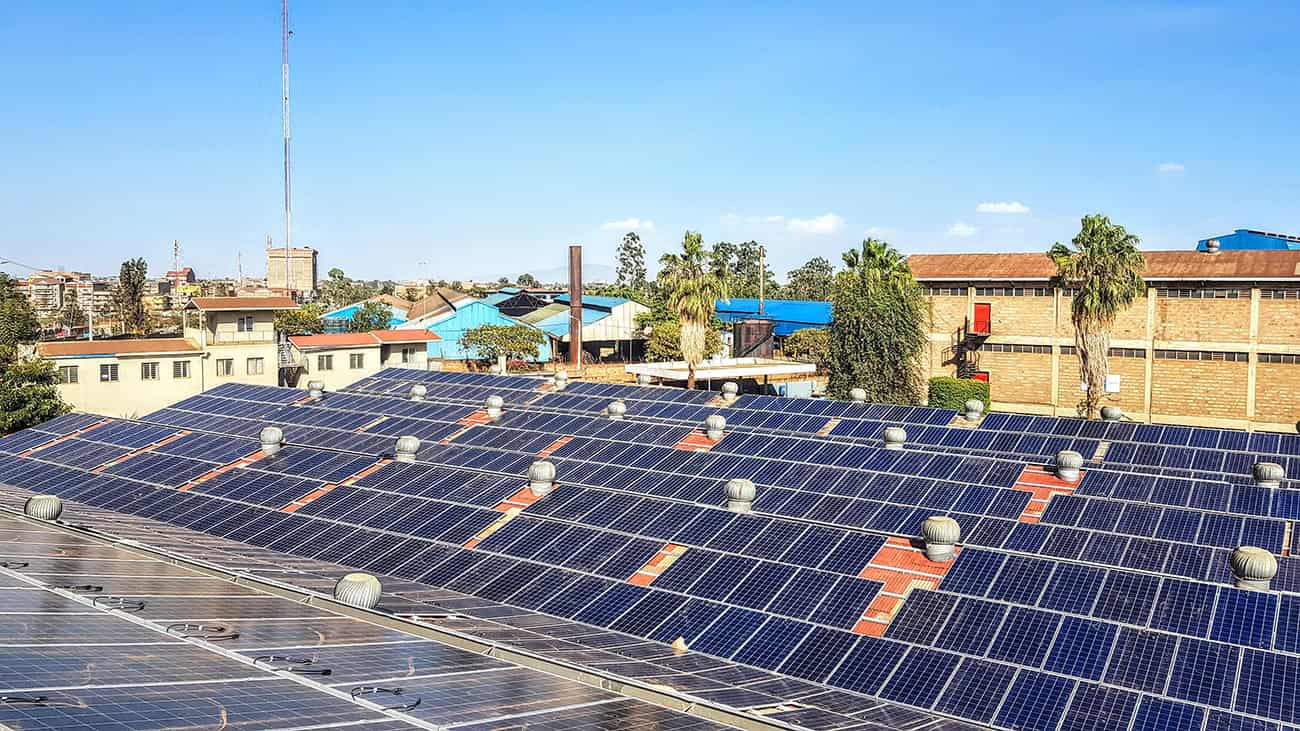Lenders remain cautious about backing risky climate projects. But blended finance deals are helping to open up opportunities in areas like renewable energy.
Finding solutions to an ever-expanding climate crisis is a global dilemma, but especially in Africa.
Despite contributing just 4% to global greenhouse gas emissions, the continent is disproportionately impacted by global warming. To cope, Africa is expected to need close to $3 trillion in investment by 2030. Yet, current commitments stand at only about $300 billion, leaving a vast gap.
Since the majority of African countries are already cash-strapped and heavily indebted, most of the existing funds come from abroad through development banks or multilateral mechanisms like the UN Green Climate Fund and the Loss and Damage Fund established last year at COP28. Local and regional commercial banks, too, are gradually increasing their participation in green finance.
“There has been a noticeable shift in the mindset of stakeholders across the African banking sector,” says Rachael Antwi, group head, Sustainability & ESG, Climate Finance at Ecobank, one of the main pan-African lenders. “Initially, there was a tendency to view climate action as a secondary concern, often overshadowed by more immediate economic challenges. However, this is rapidly changing as the impact of climate change becomes more apparent with extreme weather events, resource scarcity, and food insecurity.”

African banking sector.
Nonetheless, lenders remain cautious about backing climate projects they often perceive as expensive, high-risk and low return.
“The largest funding gap is in adaptation, which refers to ensuring resilience against the impacts of climate,” says Kenny Fihla, deputy chief executive of Standard Bank Group. “Most often, projects are not seen as commercially bankable or feasible and require innovative solutions.” Standard Bank, Africa’s largest lender, aims to mobilize $14 billion in sustainable finance by the end of 2026.
Blended Finance: Pooling Resources For Impact
A European Investment Bank (EIB) study found that while 66% of sub-Saharan African banks view green finance as a growth opportunity, only 15% have tailored products to tap into the market. Combining public and private capital is therefore emerging as a key factor in addressing the challenges ahead.
“To scale further, we need more collaboration between development finance and private finance,” argues Johan Malan, principal of Sustainable Finance Solutions at Nedbank, Africa’s fourth-largest bank, noting that blended finance offers advantages in risk mitigation and pricing.
Collaboration also bolsters the expertise needed to better structure and develop large-scale projects.
“Development finance institutions or donor funding may be catalytic in getting projects to a bankable phase,” notes Fihla. “Guarantees or insurance wraps may render projects commercially bankable or reduce costs of funding such that private sector appetite can be crowded in.”
Several types of blended finance are currently being used to support climate initiatives across the continent, including concessional loans, green bonds, technical assistance grants, intermediated lending and equity investment.
“A lot of funds are popping up across Africa to invest in climate transition, particularly renewable energies,” says Aliou Maiga, regional industry director for the Financial Industries Group at the International Finance Corporation (IFC). “The demand is growing fast. Why? Because it’s often easier for a small team of experienced people to get together and do this business than to convert a large bank.”
The IFC is actively involved in several funds, including a $20 million investment in IHS Kenya for green housing, $15 million in BIX Capital for production and distribution of climate-smart home appliances and $45 million in a green bond Sima Solar, which invests in off-grid solar projects.
The EIB, too, is active; last year, it invested over $350 million in Africa-based green funds including Mirova Gigaton and Acre Export Finance. In August, Helios Investment Partners, a London-based leader in private equity for Africa, raised $200 million from institutional investors to set up CLEAR, Africa’s largest climate fund with a $400 million target to support local startups and companies specializing in climate action.
Renewable Energy: Africa’s Leapfrog Opportunity

The one sector investors all have eyes on is renewable energy. On a continent where over 600 million people lack access to electricity, the hope is that new technologies can help users leapfrog from zero power to solar energy without connecting to a national grid: a transition similar to the one that millions of Africans have made from cash-based economies to digital money, skipping traditional banks.
Amid geopolitical insecurity and the collapse of traditional energy companies, economies in the Sahel are naturals fits for adopting renewable energies, Maiga argues, noting the rapidly expanding number of solar panels and batteries.
“Two years back, maybe I would have said Africa was not ready,” he observes, “but now I see an opportunity for the continent to leapfrog in the energy sector the same way it did in the mobile sector. Every country has its own context, but generally everyone is moving in that direction.”
Other promising areas for nimble startups include sustainable agriculture and irrigation, transport, recycling and smart construction. Last year, Africa-based climate tech enterprises raised $1.1 billion, according to regional network Africa: The Big Deal. In the first half of this year, it captured 45% of all funding raised by African startups, outpacing fintech.
Notable deals over the past few months included solar energy provider d.light, raising $176 million in July; electric vehicle maker Spiro, securing $50 million; agricultural insurance firm Pula, with $30 million in May; and SunCulture, a manufacturer of solar-powered water pumps, with $27.5 million in April.
Regulatory Adjustments And Challenges
While other players are looking to assume a role in African climate finance, largely undefined regulatory frameworks, rules and criteria force them to improvise.
“Today in the business of green economy and climate finance, every institution, commercial banks included, is trying to find out where it fits and the traditional way of banking is not going to cut it,” says Ibrahima Cheikh Diong, UN assistant secretary general and director general of the African Union’s African Risk Capacity (ARC) Group. “One has to think outside the box.”
Most jurisdictions have no specific guidelines or regulations for climate finance, leaving it up to the banks to follow international best practices, such as the International Capital Market Association’s principles for green bond issuance. Mandatory rules may be in store, however.
“Like elsewhere in the world, there is a trend of regulations starting as voluntary and then becoming mandatory,” Malan observes.
The continent’s largest economies, which also have the most developed banking sectors, are leading the way. In April, the Bank of Morocco and the World Bank released a report assessing the impact of climate change on the financial sector. A third of Moroccan banks, it found, are exposed through loans to sectors like agriculture and households in high-risk areas. It also offered recommendations on how to integrate climate risks into institutions’ strategies and policies.
Early this year, South Africa passed a first climate change bill, setting out a road map for climate action. In 2022, Africa’s largest economy had already issued a green taxonomy; since then, the South African Reserve Bank has published guidance on disclosure and climate-related risk management.
“That’s quite a big move and it also sets the tone for what is happening in other African countries,” says Malan.
“The African banking sector is increasingly acknowledging the significant challenges posed by climate change, recognizing both the economic and financial risks it entails,” notes Ecobank’s Antwi. “Moreover, by pricing in climate risks, banks are better positioned to protect their portfolios from potential losses, ensuring greater financial stability.”
These steps are crucial to creating a regulatory environment that builds investor confidence and supports growth, but they need to be sustained.
“Banks have to be very strategic in making sure that climate finance and investment are embedded in their strategies and are not just ad hoc interventions,” warns Diong.
Despite the urgency, only about 3% of global climate finance currently reaches Africa.
“There is still a long way to go, but we’ve also achieved a lot,” Malan concludes. Looking ahead, he sees potential for further growth in sustainable finance, climate debt swaps, and nature-related instruments.
